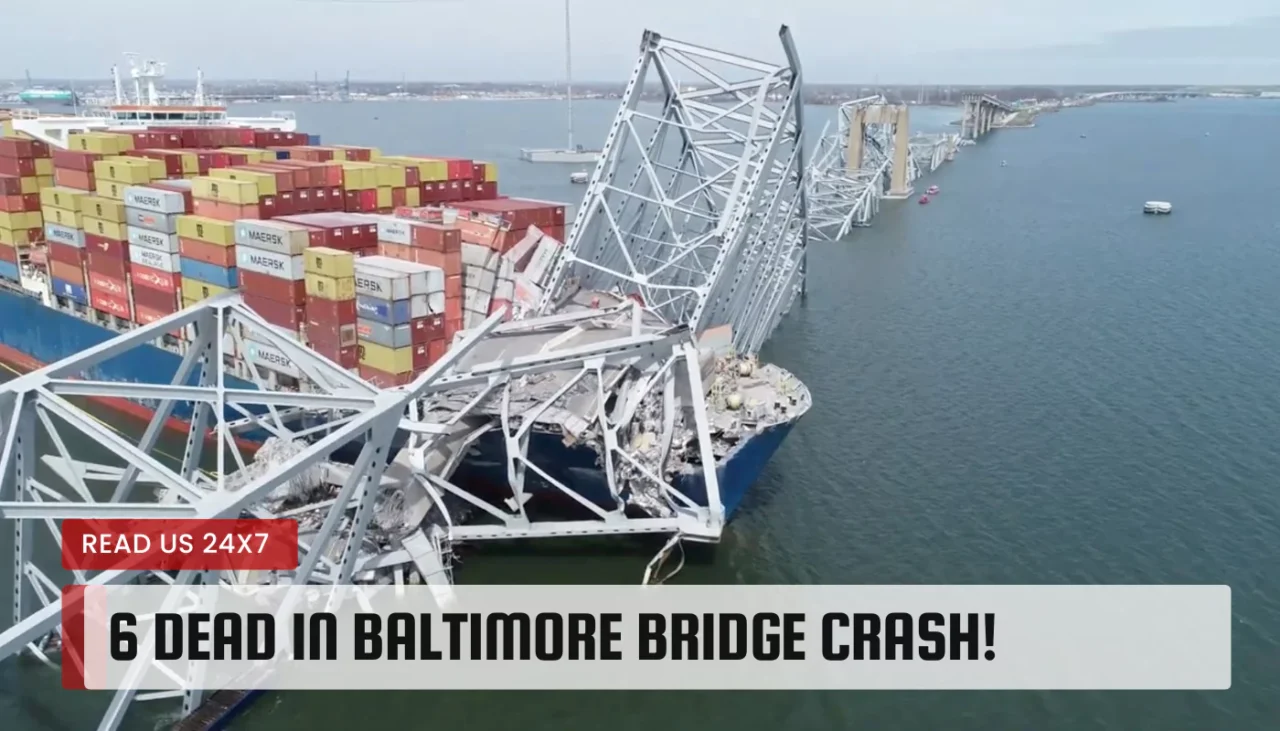In a devastating incident that unfolded on the Baltimore Bridge, tragedy struck as a cargo ship lost power and collided with the structure. The impact was catastrophic, resulting in the presumed deaths of six individuals. This article delves into the details of this heart-wrenching accident, the subsequent recovery efforts, and the broader implications for Baltimore and the shipping industry.
The Tragic Bridge Collapse in Baltimore
Details of the Accident
On a fateful day, the Baltimore Bridge bore witness to a calamitous event. A cargo ship, its engines failing, veered off course and slammed into the bridge’s supports. The collision caused a section of the bridge to collapse, trapping vehicles and pedestrians alike.
Cargo Ship Loses Power and Collides with Bridge
The cargo ship, laden with goods, encountered a sudden power failure. Desperate attempts to regain control were futile, and it careened toward the bridge. The impact was swift and merciless, leaving destruction in its wake.
Six People Presumed Dead
As rescue teams scrambled to the scene, the grim reality emerged: six lives were likely lost. Families anxiously awaited news, clinging to hope even as the odds grew bleaker. The tragedy reverberated through the city, leaving an indelible mark on Baltimore’s collective consciousness.
Recovery and Investigation
Coast Guard Leading Investigation
The United States Coast Guard swiftly initiated an investigation. Their experts combed through debris, analyzing every fragment for clues. Was it a mechanical failure? Human error? The answers remained elusive, but the urgency to uncover the truth intensified.
Efforts to Recover Victims and Debris
Amid the twisted metal and shattered concrete, rescue teams worked tirelessly. Their mission: retrieve victims and salvage evidence. The murky waters of the harbor yielded remnants of the cargo ship, while divers navigated treacherous currents. Each discovery brought both closure and heartache.
Questions and Concerns Raised by Experts
Experts convened to dissect the disaster. Was the bridge structurally compromised? Were emergency protocols followed? The tragedy ignited debates about infrastructure resilience and safety measures. The weight of responsibility hung heavy on engineers, policymakers, and city officials.
Impact on Baltimore and the Shipping Industry
Disruption of Commercial Traffic
The Baltimore Bridge was a vital artery for commerce. Its collapse disrupted the flow of goods, causing delays and financial losses. Ports stood idle, awaiting resolution. The economic ripple effect extended beyond the city, affecting regional supply chains.
Fallout for Car Manufacturers
Car manufacturers faced logistical nightmares. Vehicles destined for dealerships sat stranded on cargo ships, unable to dock. Dealerships grappled with empty lots and frustrated customers. The tragedy underscored the interconnectedness of global trade.
The Politics and Response to the Disaster
Politicians engaged in heated debates. Accountability was demanded, and promises of swift action echoed through legislative halls. The tragedy became a rallying point for infrastructure reform, with citizens demanding safer bridges and stricter regulations.
Conclusion
As Baltimore mourned its losses, the cargo ship tragedy served as a stark reminder: bridges are lifelines, fragile yet essential. The six lives lost would forever haunt the city’s skyline. In their memory, we must strive for safer crossings, ensuring that such heartbreak never repeats itself. 🌉🕊️



